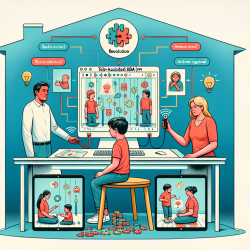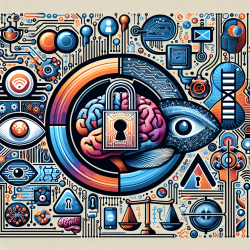Empowering Practitioners: Transforming Work-Life Balance in a Post-Pandemic World
The COVID-19 pandemic has significantly altered the landscape of work, particularly in the realm of boundary management and work-life balance. The research article, "Exploring the Impact of COVID-19 on Employees’ Boundary Management and Work–Life Balance," by Adisa et al., provides valuable insights into how these changes have impacted employees, especially those in academia. For practitioners, understanding these shifts is crucial for improving outcomes in their professional and personal lives.
Understanding the Impact of COVID-19
The pandemic forced many employees to work from home, blurring the lines between work and personal life. This mandatory shift to remote work led to intensified workloads, increased employer monitoring, and social disconnection, reducing perceived flexibility. For practitioners, particularly those providing online therapy services like TinyEYE, these challenges are familiar. The research highlights the need for effective boundary management strategies to maintain a healthy work-life balance.
Key Findings from the Research
The study revealed several critical findings:
- Work-Life Boundary Blurring: The overlap of work and home responsibilities increased inter-role conflict, leading to physical and mental exhaustion.
- Work Intensification: Employees reported longer working hours due to the transition to virtual work, leading to burnout and stress.
- Boundary Management Tactics: Participants employed strategies such as creating micro-borders and using time-based tactics to manage work and personal life demands.
These findings underscore the importance of developing robust boundary management skills to navigate the challenges of remote work effectively.
Practical Implications for Practitioners
For practitioners, the implications of this research are profound. Here are some actionable steps to enhance work-life balance:
- Establish Clear Boundaries: Define specific work hours and create a dedicated workspace to minimize distractions and maintain focus.
- Embrace Flexibility: Adapt work schedules to accommodate personal commitments, fostering a more balanced approach to work and life.
- Prioritize Self-Care: Incorporate regular breaks and self-care activities into the daily routine to prevent burnout and maintain well-being.
- Leverage Technology: Use digital tools to streamline communication and collaboration, enhancing efficiency and reducing stress.
By implementing these strategies, practitioners can create a more sustainable work environment that supports both professional success and personal fulfillment.
Encouraging Further Research
While the research provides valuable insights, it also highlights the need for further exploration into boundary management and work-life balance in various professional contexts. Practitioners are encouraged to engage in ongoing research to identify innovative solutions and best practices that can be tailored to their unique needs and challenges.
To read the original research paper, please follow this link: Exploring the Impact of COVID-19 on Employees’ Boundary Management and Work–Life Balance.










